See Italy and Die
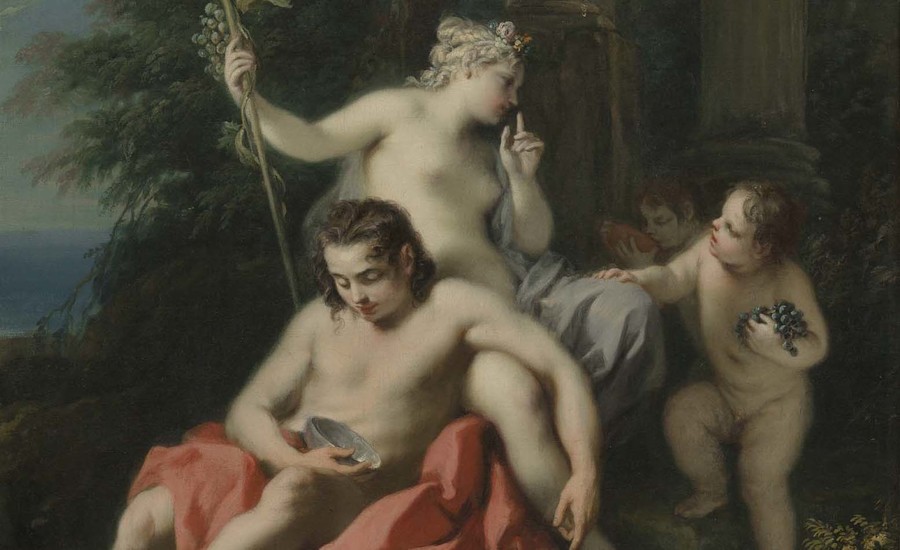
Jacopo Amigoni Bacchus and Ariadne (detail) 1730–9. Oil on canvas. Collection of Christchurch Art Gallery Te Puna o Waiwhetū, presented to the Canterbury Society of Arts by the Neave family in memory of their brother Kenelm, 1931; given to the Robert McDougall Art Gallery 1932
‘A man who has not been to Italy is always conscious of an inferiority, from his not having seen what it is expected a man should see.’
Samuel Johnson, 1776
As every traveller knows, there is something obsessive about setting out on a journey: the preparatory work of consulting guides, the organisation of itineraries, the accommodation pre-booked, bags packed with essentials, provisions for the journey assembled. This essay explores the metaphor of a journey, with the particular Italian twist that informs the work of the artists gathered together in the exhibition The Weight of Sunlight.
A conventional way of thinking about a journey is to somehow imagine it already completed: we start from somewhere because we are going to arrive somewhere else. We have destinations in mind. However, we all know from experience that journeys are never as simple and straightforward as we might first project them. The most interesting artists who journeyed through Italy have managed to combine explorations of place with self-exploration. They submitted themselves to the challenge of travel and in the process managed to know themselves differently. For most forms of travel at least cater to desire; they seem to promise, or allow us to fantasise, the satisfaction of drives that for one reason or another are denied us at home.
The narrator of Laurence Sterne’s A Sentimental Journey Through France and Italy (1768) categorises the travellers known to his age by focusing satirically on the humours and manias they display during their travels rather than on any declared mission. On the road, he writes, we may encounter
Idle Travellers, Inquisitive Travellers, Lying Travellers, Proud Travellers, Vain Travellers, Splenetic Travellers. Then follow: The Travellers of Necessity, The Delinquent and Felonious Traveller, The Unfortunate and Innocent Traveller, The Simple Traveller, And last of all (if you please) The Sentimental Traveller …1
Thus the public motive for travel (education) does not preclude in a traveller the desires and personal investments that Sterne refers to. This display of travel and the pleasure taken in it was undoubtedly familiar to the sons, and very occasionally daughters, of the British aristocracy as they departed on their continental Grand Tours in the eighteenth century. A journey to Italy to view the remains of antiquity was considered an essential element of an upper-class education, and an extended visit to Rome was the Grand Tourist’s primary objective. Accompanied by a cicerone (scholarly guide), young men embarked on their educational rite of passage through the suave allures of Paris and on south across the Alps to Italy, where the liquid softness of the light worked on them in an emancipatory fashion.
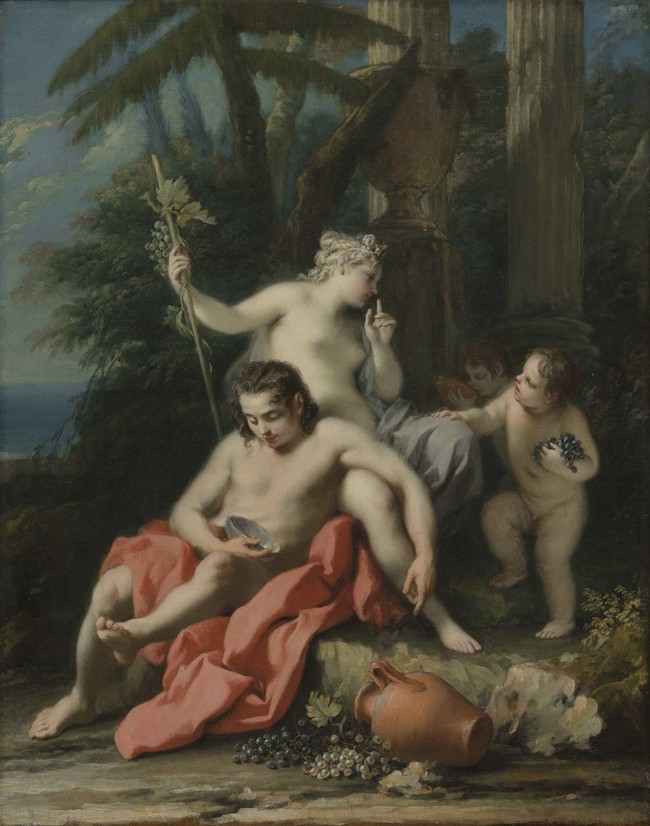
Jacopo Amigoni Bacchus and Ariadne 1730–9. Oil on canvas. Collection of Christchurch Art Gallery Te Puna o Waiwhetū, presented to the Canterbury Society of Arts by the Neave family in memory of their brother Kenelm, 1931; given to the Robert McDougall Art Gallery 1932
The Grand Tour had its origins in religious pilgrimage but love of antiquity, the desire for a milder climate, the Italian sunshine and the beauty of the Italian landscape, coupled with the opportunities for discovery of the self and the release from social and sexual constraints, were all motivations for its undertaking. Sex, gambling and drinking were part of the Grand Tour experience; there was, of course, the risk of what the experience might turn into for young men on the loose, as Alexander Pope’s Dunciad reminds us:
Led by my hand, he saunter’d Europe round, And gather’d ev’ry vice on Christian ground.FTN-2
In his Bacchus and Ariadne (1730–9), Jacopo Amigoni, a Venetian-born painter who lived and worked in London for almost ten years, provides a cautionary warning (or encouragement depending on your point of view) against the dangers (or benefits) of the Italian tour. Bacchus was the god of wine and his wife Ariadne was leader of the Maenads – women revellers who danced and sang at the feasts in his name. Here, against the redolent background of classical columns and urns, the Bacchanalia appears to be over; the wine urn is overturned and the cup is slipping from Bacchus’s hand as he leans in drunken sleep against Ariadne’s body, his arm flung suggestively over her leg.
Not only is travel typically fuelled by desire, it also embodies powerful transgressive images like this. Sigmund Freud, the founder of psychoanalysis, was infatuated with Italy and took twenty-four extended vacations there during his lifetime.3 Given the amount of travel he undertook, it is hardly surprising that the metaphor of the journey was often chosen by Freud himself as a figure for the process of analysis. Psychoanalysis may also help us understand the strength of Freud’s investment in Italy through his own theory of transference. The embracing of a particular place or country derives from identifications and is dependent less on objective factors than on a process of projection. In his 1919 essay The Uncanny, Freud connects love of place with the search for origins. There is, he maintains, an important sense in which the desire to identify with another country or another home is at the same time the desire to recover an original lost home – the lost world of prenatality. Time and time again, in the letters he writes back to family and colleagues he is in rapture over Italian art, architecture, food, light, sunsets and sights. However, in another sense, Freud’s Italy presented a set of intriguing problems for the psychoanalyst, including the phenomenon of the uncanny, the process of forgetting and the playing out of the death drive. ‘I am running away from myself ’, Freud confessed in a letter to his colleague Wilhelm Fliess.4 Freud, in his journey to the unconscious, transformed all journeys.
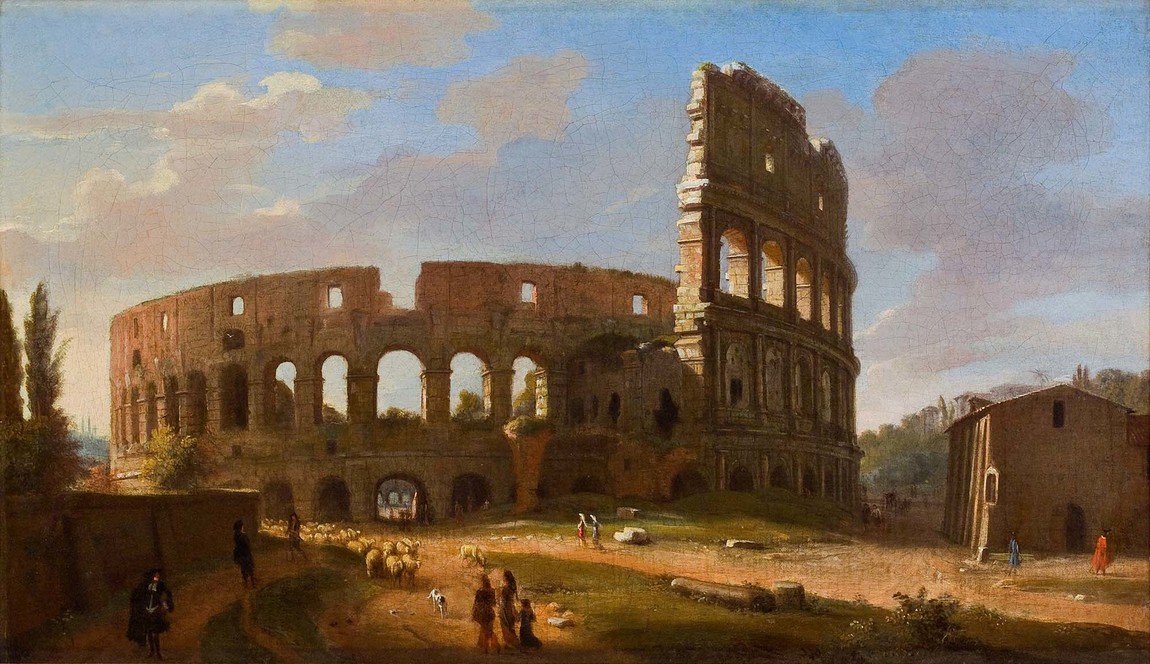
Gaspar van Wittel The Colosseum Seen from the Southeast c.1700. Oil on canvas. Collection of Christchurch Art Gallery Te Puna o Waiwhetū, purchased with assistance from the Ballantyne Bequest 1971
Throughout the eighteenth century, small but expansive compositions known as vedute (views) were much in demand as souvenirs of travel and symbols of their owners’ sophistication. Many travellers collected engravings of the capitals they visited, or sought paintings of famous sites for their art collections; others even included artists in their retinue to paint the detailed ‘views’ of cityscapes or landscape vistas. The glories of ancient Rome – and particularly the largest of its imperial monuments, the Colosseum – were desirable subjects for those who had participated in an educational Grand Tour of Europe. The setting of the Colosseum was then still relatively uncompromised by the modern city that would later surround it, and so The Colosseum Seen from the Southeast (c.1700) presents the great stadium as the dramatic feature of a bucolic landscape, in which a tourist might well have encountered a shepherd and his flock. The artist has carefully rendered the ruins washed in a soft afternoon ‘Roman’ light with long shadows and, by lowering the viewpoint so we look up, implicitly placed the viewer in the scene. This perspective also helps give a sense of the building’s scale. I propose that this hitherto unattributed work is a version of a scene by the distinguished Dutch painter, Gaspar van Wittel (1653–1736) who had settled in Rome and become so ‘Italified’ he was known as Vanvitelli. One of two known related versions is found today in the Harvard Art Museums.
Most travellers on the Grand Tour avoided mixing with the local population. On the one hand, they admired these ‘heirs of Antiquity’, these ‘children of nature’ whose lives were seemingly untouched by civilisation; on the other, they adopted a condescending attitude towards those they regarded as rough and unpredictable peasants. This ambivalence was reflected in many travellers’ accounts, including those by Maximilien Misson, who proposed that Italy evoked ‘A Paradise peopled with Devils and Madonnas’.5 Of course, a smaller number of travellers were fascinated by and attracted to the locals. One of those so drawn was Frederic, Lord Leighton who spent more time than most in Italy, which he regarded as his second home, and who filled his notebooks with lists of resident models. Leighton completed a series of portraits of young women dressed in peasant clothing of which Teresina (c.1874) is one. In a traditional billowy white peasant blouse, Teresina stares out directly and confidently to meet our gaze with an emotional intensity. This is a sitter who offers herself as an equal, with a simple but clearly intelligent demeanour. It is important to acknowledge the mastery of this painting – the quiet confidence in the modelling of figure, the spatial quality, the subtle tonal shading and, above all, the sensitivity both suggested and achieved.
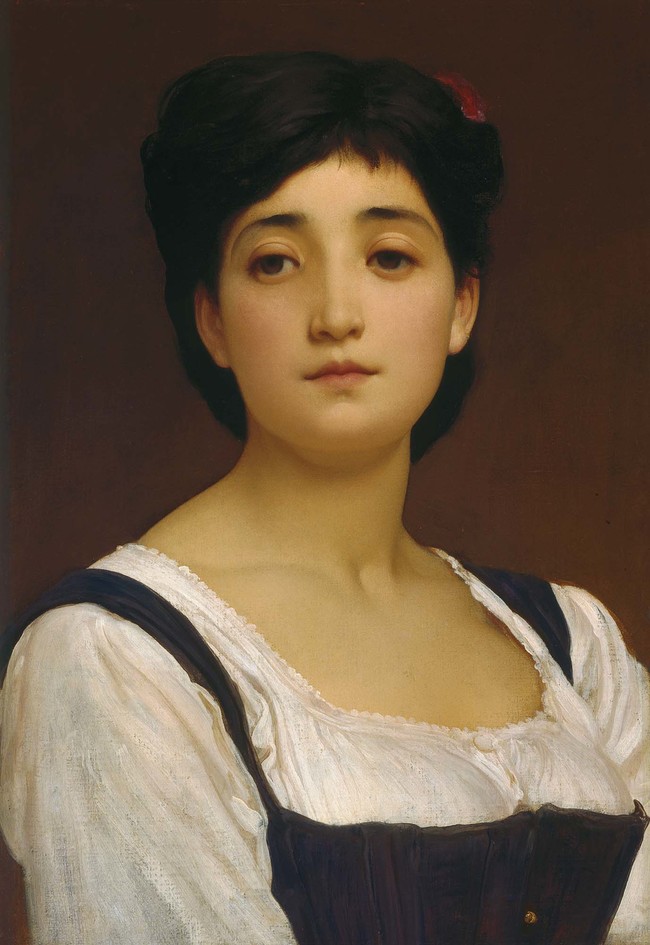
Frederic, Lord Leighton Teresina c.1874. Oil on canvas board. Collection of Christchurch Art Gallery Te Puna o Waiwhetū, presented by the Canterbury Society of Arts 1932
Of great interest to the painters who travelled to Italy was the light; the way that, diffused over a landscape, it creates a unity of all the objects it falls upon. Light in this sense is used in Italian painting to imply space; it isn’t just a moment, it reflects a continuity. As John Berger writes:
The typical Italian light by which one sees a landscape, a house, a town, seems to emphasize the age, the comparative durability, the almost unchanging construction of the scene. The heat forms a slight haze which takes the edge off temporary, superficial details, but at the same time the constant clarity of the light exaggerates the apparently permanent identity of every object.FTN-6
The marvel of William Breakspeare’s The Fountain (1883) lies in his depiction of ‘comparative durability’ and ‘unchanging construction’ through the diffusion of light and the tonal modulation of strong colour: luscious green and terracotta, the shadowed hues of a darkened doorway, the smouldering red curtain that protrudes on the right-hand side. The intonations of ochre and washed walls are brought together sublimely in the woman’s dress as she leans forward to pull her bucket from the depths of the well. Venice lacks a natural source of freshwater but has 231 wells which were built to collect, filter and store rainwater. A Venetian well is a clay storage basin with a brick well head and shaft to retrieve the water. Alluding to ‘permanent identity’, the well heads were often decorated with classical reliefs or motifs, the remnants of which we can discern here.
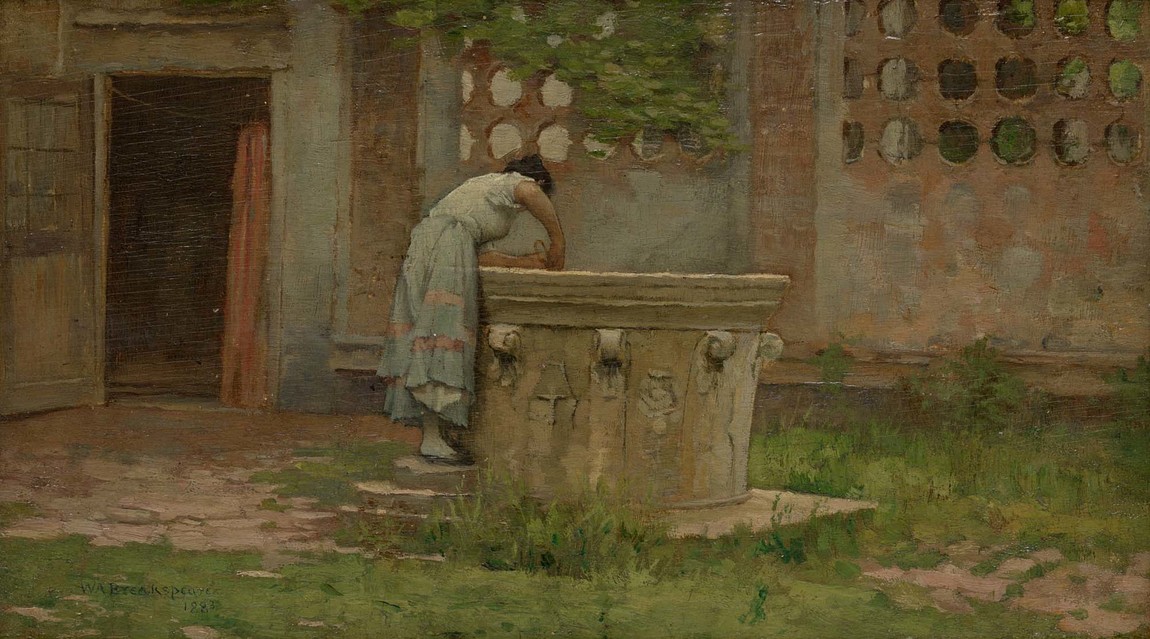
William A. Breakspeare The Fountain 1883. Oil on wood panel. Collection of Christchurch Art Gallery Te Puna o Waiwhetū, presented by the family of James Jamieson 1932
It is no wonder that for travellers and artists the English climate was something to escape from. Living in Cumbria, the rainiest county in England, Wordsworth wrote of the ‘black drizzling days that blot out the face of things,’ and envied what he described as ‘the cerulean vacancy of Italy’.7 Twentieth-century Italian poet and Nobel Prize winner, Eugenio Montale, in one of his most well-known poems uses language that was not available to Wordsworth. The poem’s title, Meriggiare, is a verb that literally means ‘to pass the hottest hours of the day in a shady outdoor place’. Of course, we have no verb that expresses the entire phrase like this in English, and translations of Montale’s poem try hard, but unsuccessfully, to convey this aspect of the ‘weight’ of the Italian sun.8
In Making Ligurian Lace (c.1905), painted just ten years before Montale wrote his poem, Henry La Thangue’s lacemakers are engaged in producing merletto a tombolo (pillow lace), working barefooted on a crazed stone path in the shade under an avenue of leafy trees. The harsh sunlight that bounces off the villa wall in the distance is reflected through the leaves in a tracery much like that of the lace coming into being on its tombolo (pillow).
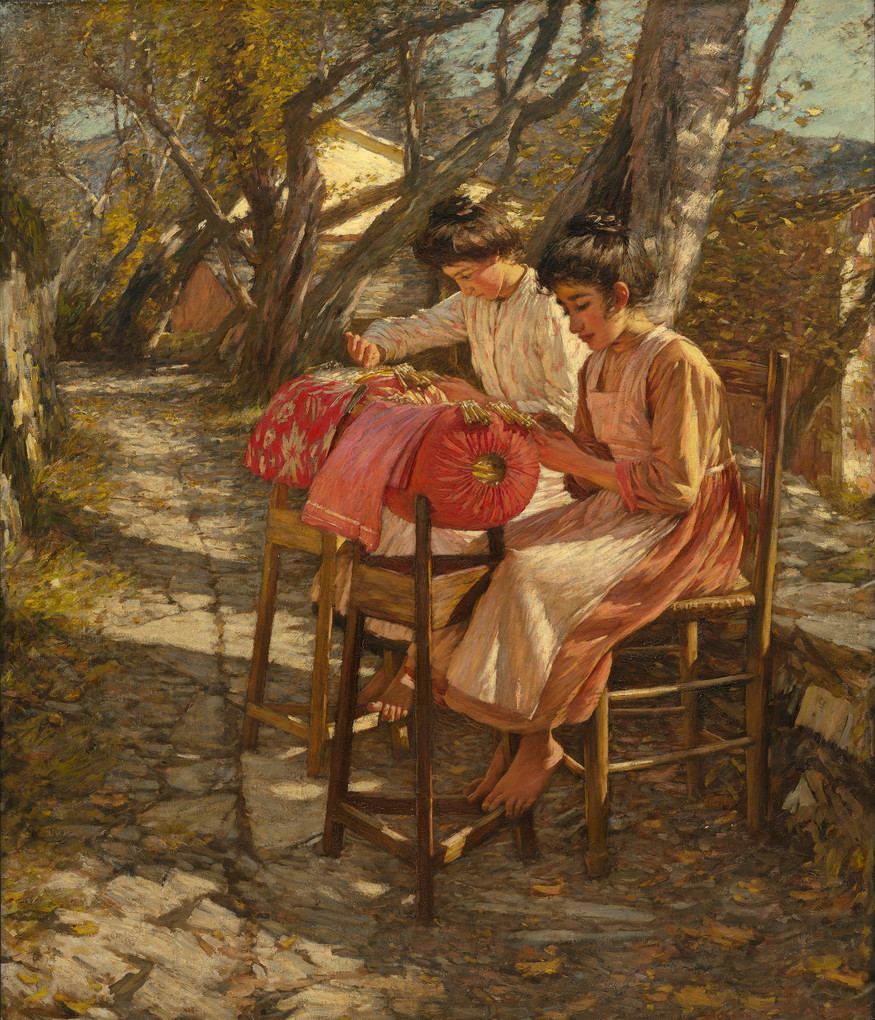
Henry H. La Thangue Making Ligurian Lace c.1905. Oil on canvas. Purchased by the Canterbury Society of Arts with the J.T. Peacock bequest 1912; presented to the city 1932
In the early 1800s the French writer Chateaubriand observed:
There is nothing comparable in beauty to the lines of the Roman horizon, to the gentle slope of its planes, to the soft, receding contours of the mountains by which it is bound… An extraordinary haze envelopes the distance, softening objects and concealing anything that is harsh or discordant in their forms. Shadows are never heavy and black; no mass of rock or foliage is so obscure that a little light does not always penetrate.9
One hundred years later these features would seem to have hardly changed. Frederick Ellis, a painter from Halifax, Yorkshire, who ended up in New Zealand employed on the La Trobe Scheme and taught, among others, Gordon Walters, painted Night Fall on the Sabine Hills in 1921 while on a travelling scholarship to Italy. The Sabine Hills, an area just north of Rome in the province of Lazio, are depicted by Ellis at the moment of early twilight, giving a particular blue tinge to the landscape and its shadows. If one looks into this landscape – the haze that Berger references, the two hills middle ground, one with a medieval village nestled on its side, the cloudless sky – one begins to see that it couples very precise and sharp observation with respect for a particular environment.
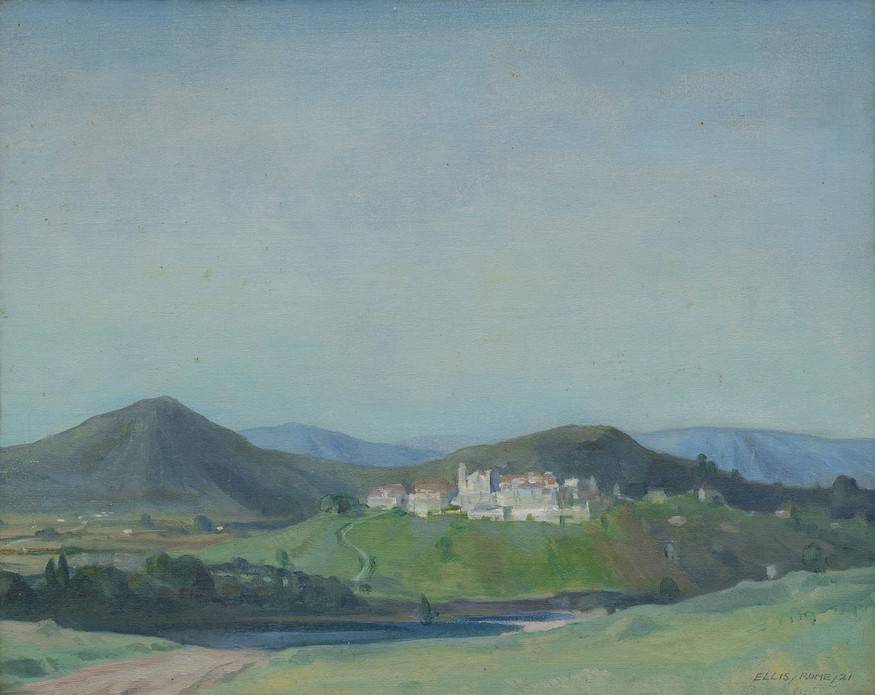
Frederick Vincent Ellis Night Fall On The Sabine Hills, Rome 1921. Oil on board. Collection of Christchurch Art Gallery Te Puna o Waiwhetū
The encounter with Italy profoundly shaped and informed the work of the artists who travelled there, and these journeys were crucial for each artist’s development, not only of their technique but also their self-analysis. Italy was where they could be who they were, though they knew, of course, that the ‘belonging’ was invented. Most journeys end where they begin, coming home; when you travel imaginatively, returns are frequent. In a curious way with Frederick Ellis we have come home. His early attempt at capturing the subtleties of Roman light may have led to his ensuing New Zealand passion for designing stained glass windows. His veduta is of Roman hills but it resonates with and in his paintings of New Zealand: Evans Bay Parade, Worser Bay, Waiwera, East Takaka and more. Like them, it is both strange and familiar. Freud’s theory of the uncanny helps us understand the obscure forces that draw these artists together in their relations with Italy. The déjà vu of travel, feeling comfortable in a foreign place, is in part experience of the heimlich or ‘homely’ but, as Freud discovered when he came to examine the etymology of the word, it exhibited identically opposite qualities – unheimlich, the strangely familiar uncanny. The strangeness that recalls to you a familiarity you cannot reach. Curiously now, Italy is the nearest thing to our home.








